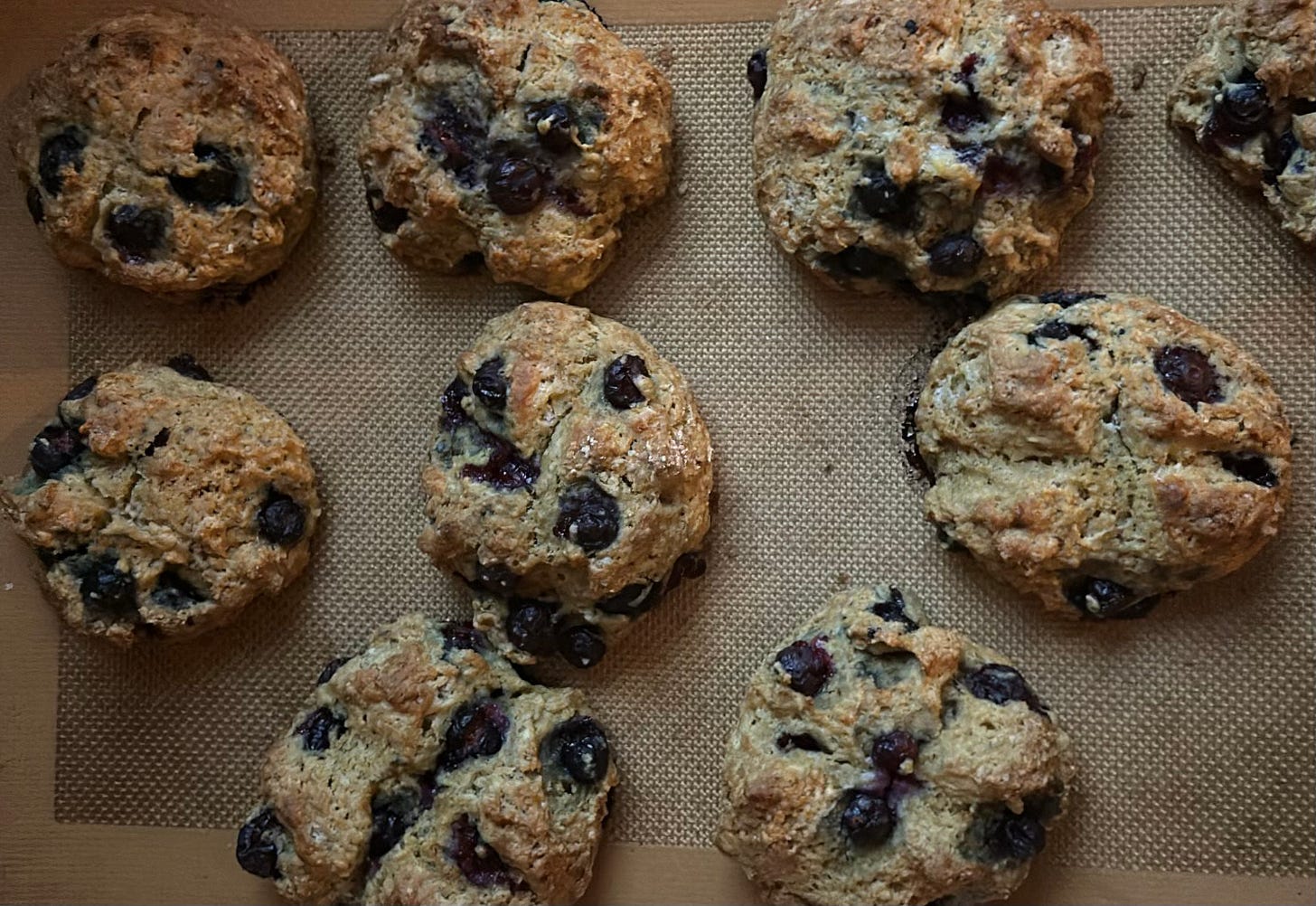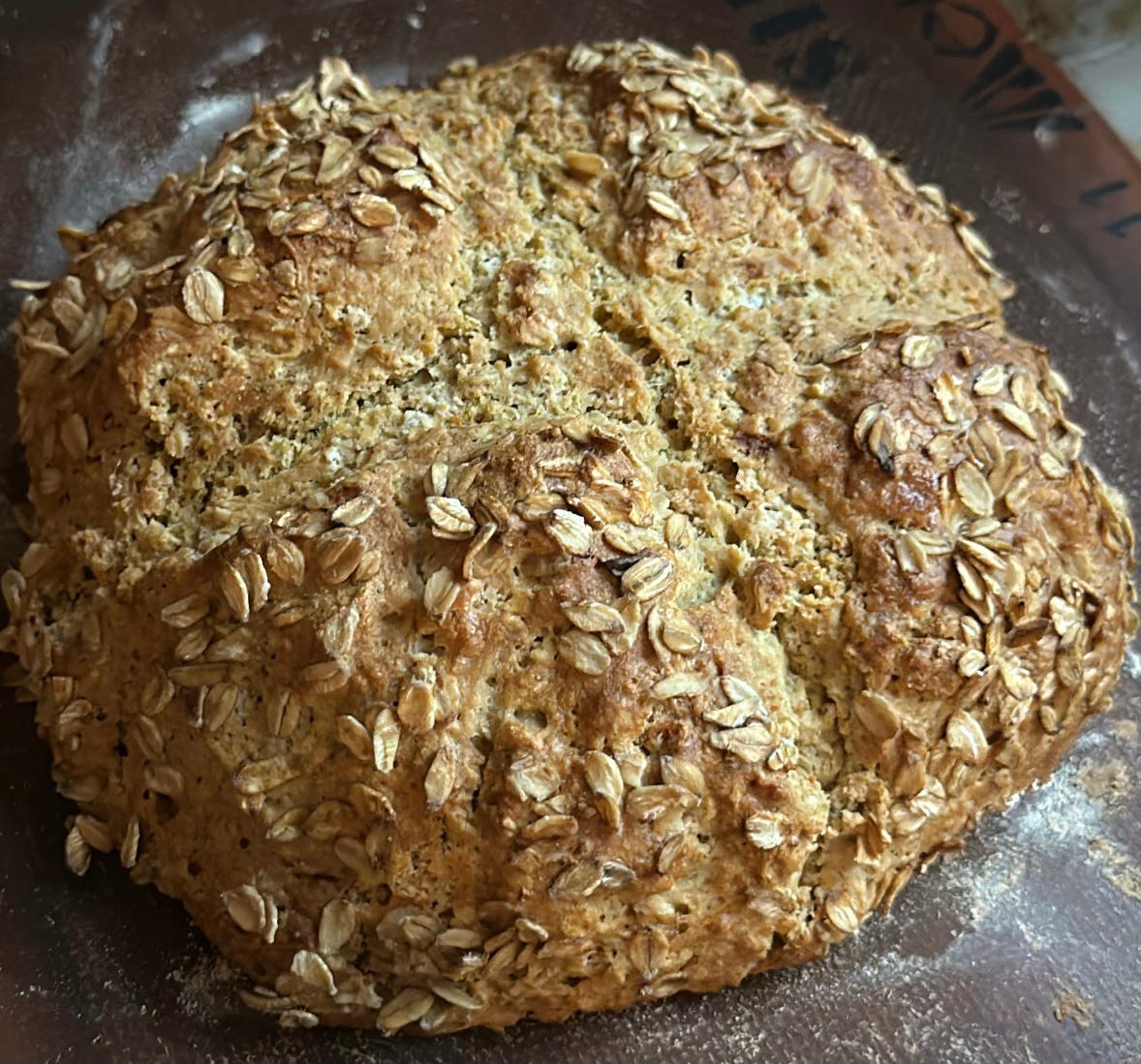This morning I got a text from my friend Amy Halloran and it was a picture of the Irish soda bread she was making at a neighborhood diner called Naughter’s in Troy, NY where she lives. Where I used to live. I miss that town and its residents like crazy!

The years I spent there gave me a deep sense of support and a community open to possibilities. People showed up for each other. If someone started cutting hair in their home, we took our kids there for a haircut. If someone held an event in a gallery, others pitched in to cook and clean. If someone sold vegetables from a bike cart, we stopped by to shop. If someone dreamed of a garden in a parking lot, people showed up with seeds. If someone needed power and food to run a community fridge on the sidewalk, neighbors committed to keeping it going. I could go on and on.
Lately, I’ve been thinking about how we create communal spaces, third places, a term that’s been getting more attention as we seek spaces outside of home and work. Especially now, after years of pandemic isolation, we’re relearning how to be together. Children are learning for the first time to take chances and build interpersonal skills, discovering that it’s always worth trying, even if it gets messy, difficult, or doesn’t work out as expected. Because most of the time, it does. We are social beings, wired for connection. I recognize that so many of us still rely on how we can build communities online.
I do want to say that personal digital lines have been my lifeline and a type of third places for most of my life. I rely on them to connect with my loved one and it is amazing that we have instant video calls now. I remember paying $1 a minute for a static-filled call to Brazil in 1993 while the minimum wage was $4.25 an hour.
I think for me, holding space within myself is an important first step. I get lonely on my own and understanding that about myself has been important so I know I need to branch out into my community. I’ve also learned to foster spaces that bring people together—creating kitchens wherever I go, teaching kids' and adult cooking classes, and now hosting Fermentation Friday meetups with my friend Jessy Brainerd.
When my husband was interviewing for a job in Maine, he texted me: “You will love the library here! It has a whole floor for the kids!”
I moved to Bangor without ever visiting. Our first New Year’s Eve in Maine was spent at that very library listening to music, crawling with our kids into a giant bubble to watch the Northern Stars Planetarium show, surrounded by families we had never met. Some of these communal places are like the town spring or the community oven. They are not just gathering places, they are survival spaces. They heal and nourish us.
Speaking of ovens, I am making an Irish meal and soda bread inspired by my friends who always remind me of how they are celebrating. So I celebrate the celebrations of coming, going and being.
Irish Soda Bread (Adapted from Amy Halloran’s recipe)
You can watch Amy making it here.
Note: If using sifted all-purpose flour, reduce the amount to 2 cups.
Ingredients
2 ¼ cups Rusted Rooster Madina flour
2 tsp baking powder
½ tsp baking soda
1 tsp salt
5 tbsp unsalted butter
⅔ cup milk kefir (or ½ cup milk + 3 tbsp yogurt)
1 large egg
Old fashioned rolled oats, for sprinkling
Instructions
In a bowl, whisk together the dry ingredients.
Cut butter into ½-inch cubes and work it into the flour mixture using a pastry blender or your fingers. It doesn’t have to be perfectly smooth—different-sized pieces are okay.
In a separate bowl, whisk together the egg and kefir (or milk-yogurt mixture).
Using a fork, gently mix the wet ingredients into the dry until just combined.
Turn the dough onto a floured surface and knead very lightly, about six times.
Pat into an 8-inch round and transfer to a buttered baking sheet.
Score into four or six sections.
Let the dough rest for 10 minutes while preheating the oven to 400°F.
Bake for 35 minutes, until golden brown at the edges.




